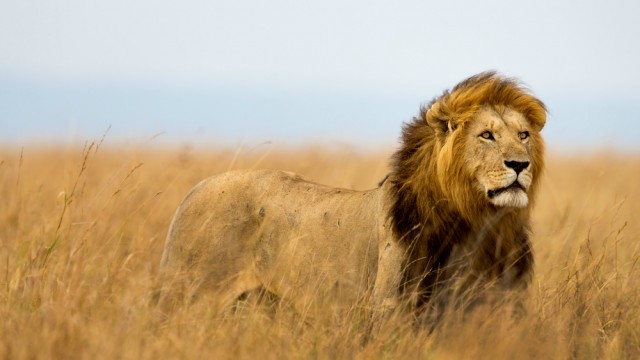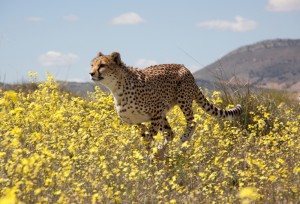Kenya’s wild places rank among Africa’s best places to see lions, leopards and cheetahs. These are the carnivores that bring the savannah alive, the apex predators that bring fear and frisson to vast herds of prey wildlife and safari-goers alike, animating the East African plains by their mere presence. And if you know where to look, you may just see all three in a single day.
It is a little-known fact that three-quarters of Kenya’s wildlife lives outside of officially protected areas, and the country’s big cats are no exception to this rule. While the parks remain the best places to see the big cats if your time is limited, the privately-run conservancies of Laikipia and surrounding the Masai Mara are increasingly winning plaudits for their big-cat-viewing opportunities. Best of all, their policies of limited access and exclusive accommodation opportunities keep away the herds of safari vehicles. The result is a more intimate experience of watching wildlife – very often it’s just you and the big cats in some remote corner of the African wilderness.
Masai Mara
The Masai Mara is a safari cliché and there’s a very good reason that the BBC filmed its classic Big Cat Diary here. Lion prides stalk the plains, building their family groups twenty and thirty strong around the river confluences and marshes that dominate the central Mara. Leopards keep to the riverine edges, waiting for the time when zebra and wildebeest inevitably, reluctantly come down to drink. And cheetahs, the bottom of the big cat food chain, scan the horizon from their termite mound vantage points. But the Masai Mara National Reserve, as the best known safari park in Kenya, is often overrun with visitors; the surrounding private conservancies have just as many cats, but without the crowds.
Tsavo East & West National Parks
Kenya’s biggest park is also arguably its wildest, an epic, red-soil territory of rugged mountains, endless plains and palm-fringed rivers. It was in Tsavo that the legend of man-eating lions was born in the late nineteenth century, and it remains a stronghold of lions – the two Tsavo parks are home to an estimated 700 lions, one-third of all lions in Kenya. Tsavo West is renowned for its leopards, while in Tsavo East cheetahs are commonly seen on the plains east of the Aruba Dam.
Amboseli National Park
The Amboseli ecosystem is famous for its elephants set against a backdrop of Mount Kilimanjaro, but lions and cheetahs are also commonly sighted here throughout the dry season. As conflict between predators and Maasai herders beyond the park’s boundaries simmers, the park itself has become a refuge and lion hotspot, a protected place with abundant game and tall grasses to conceal their approach. Cheetahs, too, love this open country, and in the 2014 dry season visitors were treated to a family of five cheetahs gambolling regularly across Amboseli’s dry savannah.
Lake Nakuru National Park
As Kenya’s human population crowds ever closer, parks like Lake Nakuru have become islands in a vast sea of humanity. Inhabiting this island, one of the country’s most compact parks, is a rare population of tree-climbing lions. Lake Nakuru is also one of the best places in Kenya to see leopards. The lesson of Lake Nakuru is, therefore, simple: look up into the branches as or you might miss the cats altogether. While you scour the undergrowth for cats, there’s the added bonus of a small population of black rhinos foraging and choughing their way through the foliage.
Ol Pejeta Conservancy
This private conservancy bucks the trend of Laikipia sanctuaries by remaining open to the public, not just those who can afford it. You might see leopards and cheetahs, but lions are invariably the stars of the Laikipia show and Ol Pejeta has a very special experience to make it work – go lion-tracking at dusk or dawn with the conservancy’s conservationists. That way you can get up close and personal with Ol Pejeta’s lions and even contribute to gathering the data necessary for protecting this iconic species.
Lewa Wildlife Conservancy
Just north of Laikipia, Lewa is where the story of private conservancies in Kenya began. It made its name as a rhino sanctuary and its remains one of the best places in Africa to see rhinos, black and white. But lions, leopards and cheetahs all inhabit the lovely Lewa Downs property. And unlike in national parks and many game reserves, there’s no impediment to safari drivers taking you off-road and so close to the cats that you can almost hear them purr.
Meru National Park
Meru is wild country, a little like Tsavo but without the crowds. Lions in particular are regularly sighted here and you’ll frequently see more lions than you will other safari vehicles – the ideal ratio for those in search of a little wilderness experience. It was the Meru area (including the contiguous Kora National Park) that George Adamson called home, and as a result its lions became some of the most famous in Kenya. A thriving rhino sanctuary as part of the park rounds out a soulful package.
Samburu National Reserve
Samburu National Reserve in Kenya’s north is one of the country’s loveliest protected areas. Samburu’s dramatic rocky outcrops and the extraordinarily beautiful Ewaso Ngiro River that cuts through the park are landscapes of rare beauty, and the lions here share this sun-blistered terrain with northern specialties such as the blue-legged Somali ostrich and endangered Grevy’s zebra. Not least because it’s a long road north to get here, but also because not many safari-goers make it this far, to see a lion here carries a special gravitas.
Nairobi National Park
Within sight of Nairobi’s city skyscrapers and one of the smallest parks in Africa, Nairobi National Park is one of the easiest places to see all three big cats. No, it’s certainly not a wilderness experiences, it can feel a little zoo-like, and it can be filled with day-trippers on weekends. But the park is accessible, these lions, leopards and cheetahs are most definitely wild, and your chances of seeing all three of the big cats are reasonably high. And that alone is reason to come.




